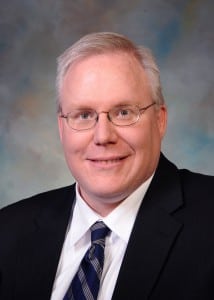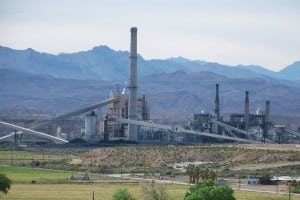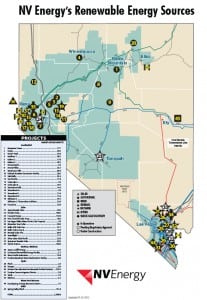NV Energy: Warren Buffett’s Plan for a Structural Power Shift
Warren Buffett bought Nevada’s NV Energy two years ago, a move widely seen as a play for solar and renewable generation. That’s working out. But as the company transitions away from legacy coal and high-priced renewable contracts signed years ago, large customers are rebelling, and the company faces a challenge to keep its big dog consumers happy.
When legendary investor Warren Buffett, actively pursuing electric utility plays, bought Nevada’s sole investor-owned utility, NV Energy, at the end of 2013 for $5.6 billion, many industry mavens saw it as a green power move. Analysts said Buffett was largely looking for solar generation in a region with copious sunlight and lots of customers.
That meant Nevada. The New York Times headlined the move as “Warren Buffett’s Big Bet on Renewables in Nevada.”
The Times quoted Christine Tezak of the investment firm of ClearView Energy: “He’s looking at this as a way to participate in the structural shift taking place in the power and energy industry.” Reinforcing that assessment, the Vegas Inc. business news website noted that, as the Buffett acquisition closed, “NV Energy CEO Michael Yackira announced today that he will retire in June 2014 from the Las Vegas–based power company. Paul Caudill, who had been president of a MidAmerican subsidiary, is now the president of NV Energy.” MidAmerican Energy is another of Buffett’s Berkshire Hathaway Energy companies.
A generation strategy is very much in place at NV Energy. “We are in a transition away from coal and toward renewables and gas,” Kevin Geraghty, NV Energy’s vice president for generation, told POWER. The constraint on that, he said, which applies to all the Berkshire Hathaway Energy companies, is “flat and declining customer rates.”

“We are in a transition away from coal and toward renewables and gas.”
Buffettt’s vision appears to be coming into focus. A year ago, First Solar broke ground on a $1 billion, 250-MW solar project near Las Vegas—Silver State South—the first big, utility-scale solar project in the U.S. to be built on public land. Owned by a subsidiary of NextEra Energy, the project will sell its power to NV Energy.
In mid-July, Bloomberg.com proclaimed, “Warren Buffett’s Nevada utility has lined up what may be the cheapest electricity in the U.S. and it’s from a solar farm.” The Las Vegas utility agreed to pay an astonishingly low 3.87¢/KWh for power from a 100-MW solar photovoltaic (PV) project First Solar Inc. is developing north of Las Vegas. The Bloomberg.com article commented, “That’s a bargain. Last year the utility was paying 13.77 cents a kilowatt-hour for renewable energy,” from power purchase agreements (PPAs) it signed years ago to meet the state’s 25% renewable energy standard. Kit Konolidge, a veteran Bloomberg Intelligence analyst, said, “That’s probably the cheapest PPA I’ve ever seen in the U.S.”
Switching on Renewables
Locals and NV Energy are calling that solar project “Switch Station.” The deal with First Solar goes a considerable distance to solving a big problem for NV Energy: large customers seeking to leave the utility and its high-cost energy to buy power from independent vendors. Switch Co., a major data farm operating in the state, which plans a $1 billion expansion near Las Vegas, filed an application with the Nevada Public Utilities Commission (PUC) in 2014 to leave NV Energy’s electric system and buy retail power from Constellation, an Exelon subsidiary. The data center company, with a round-the-clock demand of 34 MW, or more than 1% of the utility’s load, said it was seeking both cheaper and cleaner power, hoping to supply its burgeoning cloud-based data storage business with 100% renewable energy.
Adding to the troubles for NV Energy, three major gambling casinos (they call it “gaming” in Nevada)—Wynn Las Vegas, MGM Resorts International, and Las Vegas Sands Corp.—followed Switch, filing applications to flip power suppliers. All the petitions to the PUC were based on a 2001 law allowing large companies to shop for retail power outside the incumbent utility. The applications represented a profound threat to NV Energy, as gambling and the associated tourism is Las Vegas’s premier business. Vegas lives and dies on the punters and the associated revenue.
The PUC turned down Switch’s petition in mid-July (the fate of the casinos’ applications isn’t yet known, and Geraghty said the company is negotiating with the customers). In denying Switch’s application, the regulators concluded that “it is inherently contrary to the public interest to expose remaining customers to the risk that Switch’s share of the long-term embedded costs in [NV Energy’s] system will be reallocated to remaining ratepayers.” In other words, Switch’s switch would leave stranded investments on the back of NV Energy’s remaining customers.
So NV Energy and Switch reached the deal this summer that will keep the data center on the utility’s system, connected to the utility’s distribution grid, taking advantage of today’s extremely low-cost solar PV power. New NV Energy CEO Caudill said, “It is important to note that the new grid-tied Switch Station will be constructed and operated at costs that are being recognized industry-wide as among the lowest seen in the United States.”
Rob Roy, Switch founder and CEO, said, “My goal for a number of years has been to move Switch, and the customers we serve through our full service data and technology centers in Nevada, to 100 percent green, renewable energy. Unfortunately, that program was not made available under the previous management at NV Energy. It is the primary reason we chose to look last year at options outside the NV Energy system.”
NV Energy’s Geraghty said that the Switch deal wasn’t the first where the utility would supply 100% green energy to a customer. A year earlier, the company reached a deal with Apple for a data center in northern Nevada. “We agreed to supply them with 100% renewable energy from day one,” he said. But the initial supply would be from PPAs with geothermal plants at fairly high prices. However, as part of the deal, Apple agreed to pay for construction of a 20-MW solar PV plant near the Apple center outside Reno that displaces the more-expensive geothermal energy.
From Hydro to Gas to Coal Power
The Switch switch highlights the evolution of generating technologies that has been going on in Nevada for decades. It has involved a sometimes convoluted path, as described by the website FundingUniverse. The predecessor company, Southern Nevada Power, was the first private-sector purchaser of power from the 1,300-MW Hoover Dam (nee Boulder Dam), built and owned by the U.S. Interior Department’s Bureau of Reclamation and opened in 1936 (Figure 1).

Public power agencies had first preference to buy power from the dam, and the state of Nevada had a right to about 24% of the output, second in line after the Metropolitan Water District of Southern California. Nevada sold the power to the local investor-owned utility. In the 1950s, when Bugsy Siegel and the mob brought legalized gambling to the Flamingo resort and rapid and enormous growth to Las Vegas, it became clear to the utility that its share of the federal hydropower wasn’t going to be enough to meet the burgeoning load.
The company’s initial generating move was from Hoover Dam’s hydro to utility-owned gas-fired steam boilers at the Edward W. Clark Generating Station, sited near Las Vegas and named for the long-time utility executive who had negotiated the purchase of the Hoover Dam hydro. The first Clark unit went into service in 1955 and a second unit in 1957. A third unit went commercial in 1961 (see sidebar).
Clark Station Evolves over Generations
NV Energy’s Edward W. Clark Generating Station, a few miles south of the Las Vegas strip, has undergone a major transformation over the years. The power company’s first generating plant, it was built to supplement power the utility was buying from the federal government’s Hoover Dam. The first, 70-MW gas-fired steam unit at Clark went into service in 1955, soon joined by two more units, increasing the output to 175 MW.
In the late 1970s, the utility began transitioning the plant to modern gas technology, adding four combustion turbines. Then, in the 1993–1994 period, the company added heat-recovery steam turbine generators, positioning the plant to be an intermediate-load and peaking power generator. According to the utility, “The newest plant additions include 12 FT8 Pratt & Whitney peaking units that can provide up to 600 megawatts of electricity to meet short-term customer needs.” The quick-start units have a ramp-up time of 10 minutes, according to utility spokesman Mark Severts. The plant now has nameplate capacity of 1,103 MW. POWER named Clark a Top Plant Award winner in 2009.
At the same time it was serving the growing, tourist-driven gambling business, the utility was supplying power to the federal government’s Atomic Energy Commission (AEC) and its secretive but booming nuclear weapons program activities, including the atomic bomb test site near Las Vegas, now part of the U.S. Department of Energy. In 1956, the company built a 64-mile transmission line to serve the test site and the AEC’s associated activities.
Attempting to diversify its gas-dependent generation, in 1963, the company (now named Nevada Power to reflect its increasing penetration in the state) began building the 100-MW Reid Gardner coal-fired generating plant, named for the executive who had led the company for nine years and died that year.
The plant opened in 1965, the first coal-fired unit in the state, burning coal from mines in Utah, Colorado, and Wyoming. The company added two more 100-MW units in 1968 and 1976, and a 257-MW unit in 1983.
That put the company in a good position as the 1970s and 1980s were dominated by inflation, high interest rates, consumer hand-wringing, and increases in electricity rates across the country. Coal was a low-cost hedge. During the 1970s, Nevada Power was largely immune from those forces and enjoyed continued growth. Nevada Power merged with Sierra Pacific Resources, which served the hard-rock mining area in the northern part of the state and the Reno resort area around Lake Tahoe in 1999 to become NV Energy.
As a result of 21st–Century environmental and cultural disputes over coal generation and Reid Gardner— involving a local Indian tribe, environmental groups, and a powerful politician in Washington—NV Energy reluctantly shut down the three original units and will close the 257-MW plant at the end of 2017 (see sidebar).
Reid Gardner Plant and Another Reid
In the 1960s, Nevada Power, predecessor to NV Energy, put big money into coal-fired power, particularly the 557-MW Reid Gardner Generating Station near Moapa, Nev. (Figure 2). It was jointly owned by the Nevada utility (69%) and California’s Department of Water Resources (31%) at a time when California was importing large amounts of coal-fired power. The first three 100-MW units went into service in 1965, 1968, and 1976. The fourth, a 257-MW unit, began commercial operation in 1983. The plant operated without much controversy into the 21st Century.

Then opposition to the plant erupted. NV Energy—after years of pressure from local and national environmental groups, the Moapa Band of the Paiute Indian tribe, and then-Senate Majority Leader Harry Reid (D-Nev.)—agreed to close the plant in 2014. The company has shut down the three older 100-MW units and will close the remaining 257-MW unit at the end of 2017. The plant is located adjacent to the Indian tribe’s reservation. The tribe has long blamed the plant for health problems among its members, although it has never been established that the plant affected the health of residents of the reservation.
Over the years, NV Energy faced multiple challenges from state and federal agencies and courts, including more than $6 million in fines and an $85 million settlement with the Environmental Protection Agency for air pollution violations. With natural gas prices at historic lows and no indication that they would be spiking, the company decided it was less costly to invest in new gas peaking capacity and solar than to add further pollution controls to Reid Gardner.
When NV Energy announced it would shut down the plant, Harry Reid issued a press release. He said, “For years, the Moapa Band of Paiutes endured the consequences of breathing dangerous pollution from the Reid Gardner coal plant, and I am pleased that Nevadans and its leaders united to stand up for the Moapa Band and create new opportunities for the tribe.”
Gas Supporting Renewables
Today, NV Energy generates by far the largest amount of its electricity from natural gas. In southern Nevada, the company has 4,365 MW of gas-fired capacity, including baseload and intermediate combined cycle units and simple cycle units for peaking. It also has 257 MW of coal-fired capacity left from Reid Gardner, set to close in 2017 and 255 MW (11%) of the large, multiple-owner Navajo Generating Plant in Page, Ariz., whose fate is uncertain. In Northern Nevada, the company has 1,111-MW of gas capacity, and 522 MW in coal generation.
The company’s renewable portfolio (Figure 3) includes some 800 MW of solar (including the 100 MW Solar Switch project), mostly under development; about 385 MW of geothermal generation in place, largely around the Reno area, with another 150 MW of geothermal projects in process; 235 MW from Hoover Dam (which doesn’t count against its state renewable goal); and 152 MW of wind under development.

The Reid Gardner closure agreement, which has the company decommissioning units while continuing to operate the largest unit, is the tangible symbol of NV Energy’s retreat from coal. A proposed 1,500-MW Ely Energy Center, offered in the early 2000s as a new coal project, fell victim to opposition from environmental groups and, again, Harry Reid, who was pushing for renewable power. The company announced in early 2009 that it would shelve the project.
Today, NV Energy is embarked upon a renewables-first strategy, backed by its muscular gas-fired fleet of generating units, to which it is also adding units. The company has made more than a billion-dollar commitment to utility-scale solar (while experiencing a boom in rooftop solar).
Next Moves
NV Energy also has its eye on California’s expanding Energy Imbalance Market. Geraghty said his company will join the market this fall. So far, he said, the market “is for multi-utility balancing purposes only.” But it could evolve into a broad multi-state market that looks like the PJM Interconnection or the Midcontinent Independent System Operator (MISO). The imbalance market began in November 2014 with transactions between the ISO and Berkshire Hathaway’s PacifiCorp, headquartered in Portland, Ore. Puget Sound Energy of Bellevue, Wash., and Arizona Public Service of Phoenix are scheduled to join the market in October 2016.
As for the future of NV Energy’s generating fleet, look for more renewables and natural gas. Is there a future for coal-fired power in Nevada? “Coal has got zero future in Nevada,” said Geraghty, who grew up in coal-centric western Pennsylvania, “and not much future in the rest of the country.” What about nuclear? “No future in Nevada,” he said. “That’s largely driven by water,” as the region is gripped by a long-running drought that could, some fear, be only the opening act for a regional mega-drought.
—Kennedy Maize is a long-time energy journalist and frequent contributor to POWER.
Ed: This article appears in the September 2015 issue of POWER and was first posted online Aug. 6, 2015.